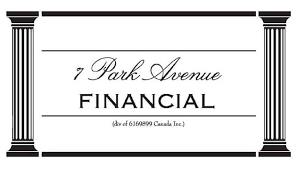|
Guide to Navigating Business and Working Capital in Canada
How to Leverage Business Capital for Success in Canada
YOU ARE LOOKING FOR BUSINESS CAPITAL AND WORKING CAPITAL!
Working Capital Decoded: Your Business's Secret Weapon
You've arrived at the right address! Welcome to 7 Park Avenue Financial
Financing & Cash flow are the biggest issues facing business today
ARE YOU UNAWARE OR DISSATISFIED WITH YOUR CURRENT BUSINESS FINANCING OPTIONS?
CALL NOW - DIRECT LINE - 416 319 5769 - Let's talk or arrange a meeting to discuss your needs
Or Email us with any question on Canadian Business Financing
EMAIL - sprokop@7parkavenuefinancial.com

Harnessing Working Capital: Strategies for Canadian Entrepreneurs
Gain an edge in the Canadian business world by understanding working capital because it's the cornerstone of sustainable financial health
Introduction
In the busy world of Canadian business, the concept of working capital stands as a double-edged sword—essential for operations, yet misunderstood by many. If you've ever found yourself scratching your head, trying to discern between cash flow, business capital, and the intricacies of working capital, you're not alone.
For Canadian entrepreneurs and business owners, understanding these financial nuances is pivotal to ensuring robust financial health and driving sustainable growth. Let 7 Park Avenue Financial demystify the complexities surrounding working capital, its implications for your business, and how to harness it effectively.
The Myth of Working Capital
We can hear our clients now! How possibly could working capital (isn’t that cash flow?) be bad for my firm's financial health? Let’s talk about that.
Defining Working Capital
The technical financial folks define working capital as a very basic calculation that even the non-financial business owner can do - simply deduct your current liabilities from your current assets (from your balance sheet statement) and, voila! Congratulations, you have working capital. Hopefully, that number is a positive number because when it’s negative you're technically insolvent and that's a subject and solution for another day!
The Implications of Positive Working Capital
Anyway, our working capital number is positive - that’s good, right? Not necessarily, and that’s the premise of the info we share here because if you have positive working capital your funds are tied up in receivables, inventories, and prepaid items.
Understanding and Measuring Working Capital
It is therefore very important to understand what makes up working capital, how you can monetize or cash flow it, and most importantly, but often totally overlooked, how you can measure business capital and working capital.
Key Metrics for Business Capital
The essence of measuring your working capital revolves around turnover, days sales outstanding, inventory turns, and payables days outstanding.
The good news is that you can very easily calculate and track these measurements, and we can virtually guarantee they will better assist you in understanding why your investment in working capital is very much a teeter-totter of good news/bad news.
The Money Travel Analogy
Do you like to travel? Money does also, and consider how long it takes for a dollar to travel through your company. From the day you place an order, purchase product, pay for product, bill a receivable, and yes, collect that receivable that total cycle can be easily 200 days if not more. That’s a lot of travel, so you hopefully can see our premise here that your investment in your working capital accounts is not necessarily a great thing.
Components and Challenges of Your Business
Your business is composed primarily of inventory, receivables, and payables, (also fixed assets). We therefore strongly suggest to clients that they understand the turnover and overall return they are getting from these key asset accounts.
You would understand your working capital situation somewhat better if it were not for those pesky issues that you can’t control - business owners and financial managers recognize them well and run into them every day.
They are sales growth and decline, your fixed costs that you have to pay and manage no matter what, and any financial distress you may be experiencing from past external factors - i.e. a bad year, etc.
Finding the Right Balance with Working Capital
The holy grail of business capital and working capital financing is when you have strong controls on internal asset turnover and at the same time you have access to external working capital via bank lines, asset-based lending facilities, commercial business loans, government loans, tax credit financing ,etc.
We constantly remind clients that if they are turning over their working capital accounts more efficiently all the time it in effect a measure of the true success of your company - think of it, you're buying things, paying for supplies on time, and customers are paying you on time and ordering more goods and services.
A quick tool for measuring your progress in this area is simply to take your receivables days and inventory days, subtract your payables days outstanding, and if that number is improving, or going down you are winning the 'working capital is bad for your health' premise we have presented.
Understanding Business Capital in the Canadian Context
As a Canadian business owner, you are both granting credit and requesting credit (customers and suppliers respectfully). Understanding business capital in this manner will allow you to finance better internally and borrow via banks, finance firms, asset based lenders, etc.
The "Green" Capital Movement in Canada: As sustainability becomes a central theme in global discussions, Canadian businesses are uniquely positioned to leverage this. Instead of traditional capital, businesses can seek "Green Capital" - funds specifically allocated for eco-friendly and sustainable projects.
Financial institutions are more keen than ever to fund projects that resonate with the global sustainability drive. Thus, a business proposition underlined with eco-conscious initiatives can not only access capital faster but can also enjoy favourable terms given the PR and environmental value such initiatives bring to lenders.
Key Takeaways
The Role of Business Capital in Decision-making:
Business capital (both working capital liquid assets and long-term capital) impacts decisions around investments, growth opportunities, and risk management in day to day operations.
Implication: Adequate access to and efficient management of business capital determine a company's ability to seize opportunities and weather financial downturns.
Turnover and Efficiency Metrics:
Understanding: Metrics like turnover, days sales outstanding, inventory turns, and payables days outstanding help measure the efficiency of working capital management.
Implication: Faster turnover indicates efficient use of assets. For instance, a shorter days sales outstanding means the company collects its receivables quickly.
Internal vs. External Working Capital:
Understanding: While internal working capital is tied to a company's operational efficiency, external working capital refers to external financing methods like bank loans, asset-based lending, grants, etc.
Implication: A balanced mix of both ensures sustainable business growth. Access to external capital can support and expand operations, especially when internal capital is limited.
Conclusion
Call 7 Park Avenue Financial, a trusted, credible and experienced business financing advisor about our 'health’ problem and what your tools and solutions might be for better business financing success.
FAQ
What exactly is working capital?
Working capital is the difference between a company's current assets and liabilities. It measures short-term financial health and liquidity. To calculate the working capital formula the relationship is called the ' working capital ratio'. Generally speaking, a good working capital ratio is viewed as 2:1.
Why is a positive working capital significant?
Positive working capital indicates that a business can cover its short-term liabilities using its short-term assets, ensuring smooth operations and the ability to meet financial obligations.
How do metrics like days sales outstanding affect my business?
Such metrics determine the efficiency of your working capital management. For example, a shorter days sales outstanding means you're collecting payments faster, optimizing cash flow.
How do external and internal working capitals differ?
Internal capital relates to the company's efficiency in managing a company's working capital via assets and liabilities, accounts payable and accounts receivable, while external capital refers to external financing methods, like a line of credit or working capital loans or other types of Canadian business financing.
Why is understanding business capital essential for Canadian entrepreneurs?
Grasping business capital concepts enables informed decisions, better risk management around the company's balance sheet and interest payments, and maximizes growth opportunities in the Canadian market around long-term debt and project related expenses.
How does the Canadian regulatory environment influence business capital?
The Canadian regulatory environment sets standards for lending, borrowing, and managing business finances, ensuring transparency and protecting both businesses and lenders.
Are there sector-specific nuances in accessing working capital in Canada?
Yes, sectors like technology, agriculture, or retail may have unique requirements and challenges when accessing and managing working capital in Canada, including a busy season for many industries.
How does the global economic scenario affect working capital for Canadian businesses?
Global economic shifts can impact import/export, interest rates, and investor confidence, influencing the availability and cost of working capital for Canadian businesses.
What are the most common mistakes businesses make with working capital management?
Common mistakes include not forecasting cash flow, over-relying on short-term debt to reverse negative working capital, and not regularly reviewing working capital metrics.
Are there tools or software that can help manage and optimize working capital for my business?
Yes, several financial tools and software solutions cater specifically to net working capital management, providing analytics around operating expenses, forecasts, and actionable insights for businesses.
Click here for the business finance track record of 7 Park Avenue Financial

' Canadian Business Financing With The Intelligent Use Of Experience '
STAN PROKOP
7 Park Avenue Financial/Copyright/2024

Stan Prokop is the founder of 7 Park Avenue Financial and a recognized expert on Canadian Business Financing. Since 2004 Stan has helped hundreds of small, medium and large organizations achieve the financing they need to survive and grow. He has decades of credit and lending experience working for firms such as Hewlett Packard / Cable & Wireless / Ashland Oil
|